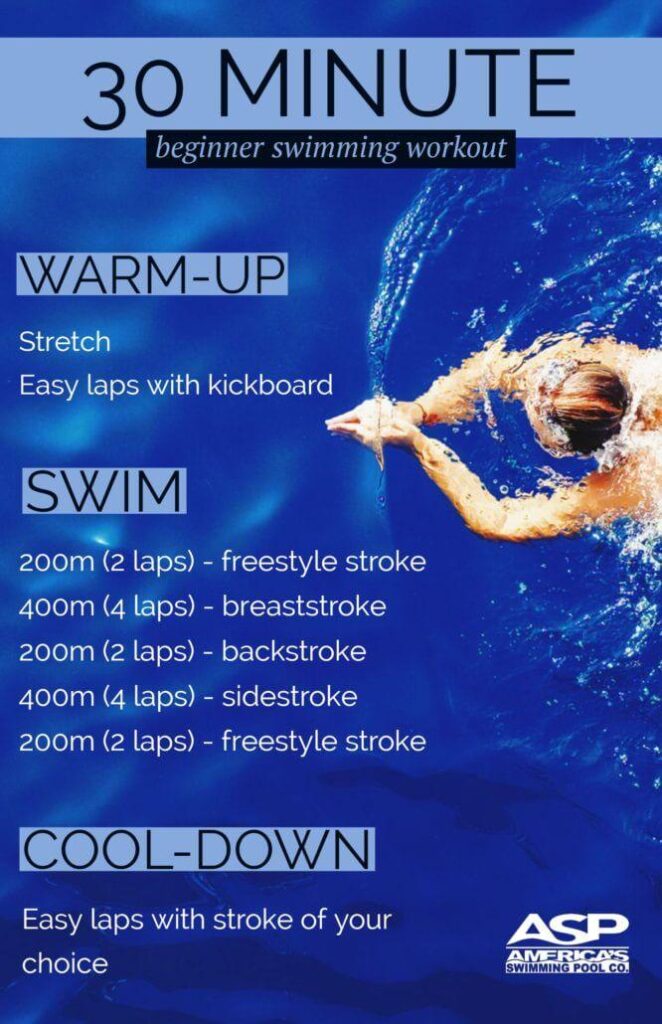When it comes to cardiovascular exercise, there are countless options to choose from—running, cycling, HIIT, and more. Yet, one activity consistently stands out as the ultimate cardio workout: swimming. Combining endurance, strength, and low-impact movement, swimming offers a unique full-body experience that few other exercises can match. Whether you’re a seasoned athlete or just starting your fitness journey, understanding why swimming holds this prestigious title can inspire you to dive in and elevate your cardio routine to new heights. In this article, we’ll explore the science-backed benefits and practical reasons that make swimming the gold standard for cardiovascular fitness.
Table of contents
- The Full Body Engagement of Swimming and Its Cardiovascular Benefits
- How Swimming Enhances Lung Capacity and Boosts Endurance
- Selecting the Best swimming Strokes for Optimal Cardio Results
- Incorporating Swimming into Your Weekly Fitness Routine for Maximum Impact
- Key Takeaways
The Full Body Engagement of Swimming and Its Cardiovascular Benefits
Swimming stands apart from many traditional cardio exercises by actively involving nearly every muscle group in the body.This full-body engagement is not just about arm strokes or leg kicks—each phase of a swimming stroke requires precise coordination, activating core muscles, enhancing balance, and building strength simultaneously. Unlike running or cycling,where impact stresses can limit duration,swimming’s buoyancy allows for longer,more consistent workouts without joint strain.This dynamic involvement fosters improved muscle tone while challenging the cardiovascular system in a way few workouts can match.
Cardiovascular health reaps remarkable rewards through regular swimming sessions. Key benefits include:
- Enhanced heart efficiency: Swimming improves cardiac output by increasing the heart’s ability to pump blood effectively throughout the body.
- Better lung capacity: Regulated breathing patterns during swimming encourage lung expansion and oxygen uptake,optimizing respiratory function.
- Lower blood pressure: Consistent aerobic activity in water reduces arterial stiffness, promoting balanced blood flow and overall vascular health.
- Caloric burn and weight management: The combination of muscular exertion and aerobic demand accelerates metabolism for sustained calorie burning.
How Swimming Enhances Lung Capacity and Boosts Endurance
Engaging in swimming regularly challenges your respiratory system in ways other cardio workouts simply can’t match. As you glide through the water, controlled breathing becomes essential, prompting your lungs to work harder to efficiently extract oxygen and eliminate carbon dioxide.This constant respiratory demand not only trains your lungs to expand more fully but also increases lung elasticity. Over time, swimmers frequently enough experience greater lung volume, enhanced oxygen uptake, and improved overall respiratory efficiency, which contributes to better stamina both in and out of the pool.
Beyond lung improvements, swimming also fortifies your muscular endurance by combining aerobic conditioning with resistance training inherent in water.The body’s need for steady oxygen delivery during prolonged swim sessions boosts cardiovascular health, while the water’s buoyancy supports joint movement and reduces injury risk. Key benefits include:
- Steady heart rate adaptation that improves endurance capacity
- Enhanced circulation facilitating quicker recovery and reduced fatigue
- Improved muscle tone and strength supporting sustained physical output
This unique blend makes swimming an unmatched workout for building lasting endurance and maximizing lung potential.
Selecting the Best Swimming Strokes for Optimal Cardio Results
When aiming for maximum cardiovascular benefits, not all swimming strokes are created equal. As an example, the freestyle stroke offers an excellent balance of speed and endurance, engaging large muscle groups and promoting sustained heart rate elevation. Conversely, the butterfly stroke is incredibly intense and demands powerful bursts of energy, which can rapidly increase cardiovascular output but may not be ideal for longer durations.Meanwhile,the backstroke provides a more moderate cardio challenge while helping improve posture and spinal alignment,making it a great option for those seeking a heart-pumping workout with lower impact on the neck and shoulders.
To optimize cardio results, consider incorporating a mix of strokes into your routine. This approach keeps workouts dynamic and prevents muscle fatigue while consistently pushing your heart rate into fat-burning zones. Hear are some key tips:
- Alternate strokes: Cycle through freestyle, breaststroke, and backstroke in intervals to engage varied muscle groups.
- Focus on technique: Efficient swimming reduces energy waste and amplifies cardiovascular effort.
- Increase intensity: Perform short sprints with butterfly or freestyle to elevate heart rate rapidly.
- Breathe rhythmically: Proper breathing enhances oxygen uptake, sustaining cardio endurance.
Incorporating Swimming into Your Weekly Fitness Routine for Maximum Impact
To truly harness the benefits of swimming, aim to integrate sessions into your weekly schedule with intentionality. Start by designating specific days for swimming, such as two to three times per week, ensuring consistency and allowing your body to adapt to the unique full-body workout it provides. Consider mixing various strokes—freestyle, breaststroke, backstroke, and butterfly—to engage different muscle groups and keep workouts challenging and dynamic. By alternating intensity levels,you can incorporate both steady-state aerobic sessions and high-intensity interval training (HIIT) in the pool,maximizing calorie burn and cardiovascular conditioning.
Here are a few tips to help you swim smarter,not just harder:
- Warm Up and Cool Down: Begin with a gentle swim or water jogging and finish with slower laps to aid recovery and prevent injury.
- track Your Progress: Use swim apps or pool timers to log lap counts, distances, and times to stay motivated and measure advancement.
- Focus on Technique: Efficient strokes reduce fatigue and increase endurance. Consider taking a lesson or watching tutorials to refine form.
- Incorporate Strength Moves: Add water resistance exercises like flutter kicks or underwater push-ups to build muscle alongside cardio.
Key Takeaways
Incorporating swimming into your fitness routine offers a dynamic and effective way to boost cardiovascular health while minimizing joint strain. Its unique blend of full-body engagement, resistance, and low-impact movement makes swimming an unparalleled cardio workout suitable for all fitness levels. Whether you’re aiming to improve endurance, burn calories, or enhance overall well-being, diving into the pool could be your best move yet. So,next time you’re looking to elevate your cardio game,remember that swimming not only strengthens your heart but also supports a balanced and sustainable approach to fitness.

